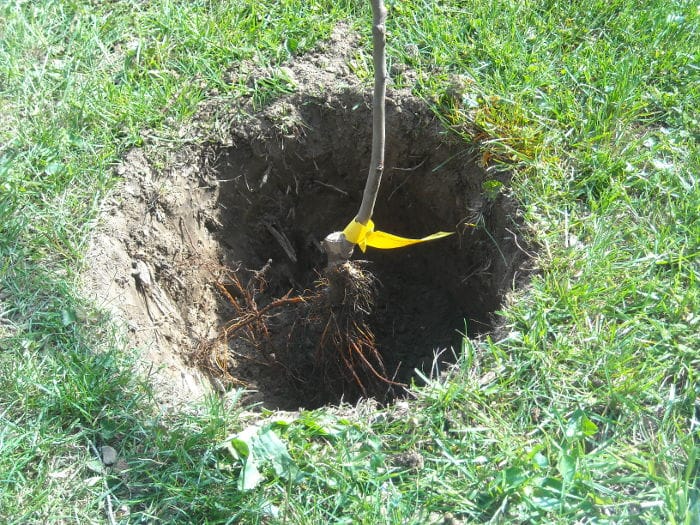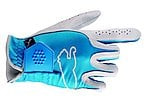 I actually remember one greener newbie who made holes not far from this size. Amazing to watch how much time he spent planting each tree, occasionally taking a break to wipe his brow, blow his nose and continue. He lasted about a week.
I actually remember one greener newbie who made holes not far from this size. Amazing to watch how much time he spent planting each tree, occasionally taking a break to wipe his brow, blow his nose and continue. He lasted about a week.
Once you have your blade deep enough in the ground you want to make your hole. But as we were talking about efficiency, here too you do not want waste. Penetrate your blade only deep enough, and make your hole just large enough. Remember that you also need to fit your hand into the hole. Some planters prefer not to wear gloves but wrap duct tape around their fingers and tips, to get a better feel for the tree and so their tree hole can be that much smaller.
Surprisingly, even with this simple task there are several styles:
-
Standard Front Cut – probably the most common. Once you get your shovel in deep enough, push the handle forward slightly, insert the blade a notch deeper, then pull it back towards you. You create a wedge this way, and usually slide your plug in from right to left (if you are right handed).
-
Back Cut – sometimes the ground can be mushy and soft enough where making a wedge doesn’t even make that much sense. In such cases I find it can be good to pull the handle close towards you, place the plug on the back of the blade, and as you bring the handle back to the vertical position, you slide your plug into the mush along the blade, practically pulling the blade out of the ground at the same time.
-
C-cut – I’ve seen some very fast planters use this technique consistently, although I myself found it rather odd. Apparently a strong wrist is necessary. Basically, once you get your shovel in deep enough, you pull the handle down to the right and then towards you, essentially creating a wedge which opens to the right and towards you. With the point of the triangle pointing to the left and plenty of room on the right where you can insert your tree (again, assuming you are right handed – it would be the opposite case if left handed). Furthermore, the edge along the left is nice and straight and against which you can rest your tree, so that the plug ends up being safely straight for the checker.
The use of any of the above can obviously change depending on the terrain. Sometimes I find it good to purposely practice a particular approach for an entire day, to ingrain it into my memory so it is well versed and practiced for when I reach a microspot suitable for it. Like when I was practicing squash. I would always come to games at least half an hour before everyone else and practice particular moves. It sinks into your instinct and, with such practice training, you deliver a better shot when it’s time to use it. There isn’t time to think about these things. For tree planting, there’s more time but, again, you don’t want to get into a routine rut. It is good to practice other approaches so that you are aware of all their strengths and weaknesses and so that you can apply each of them instinctively depending on the microspot before you.

Next: |
We are a family operation managing private custom boat tours in the beautiful Palawan area, and are happy to help travelers with their plans through the country, having traveled a lot of it ourselves and planning to visit it all. The pages in this section concern when I was treeplanting in Canada over eight summers.
